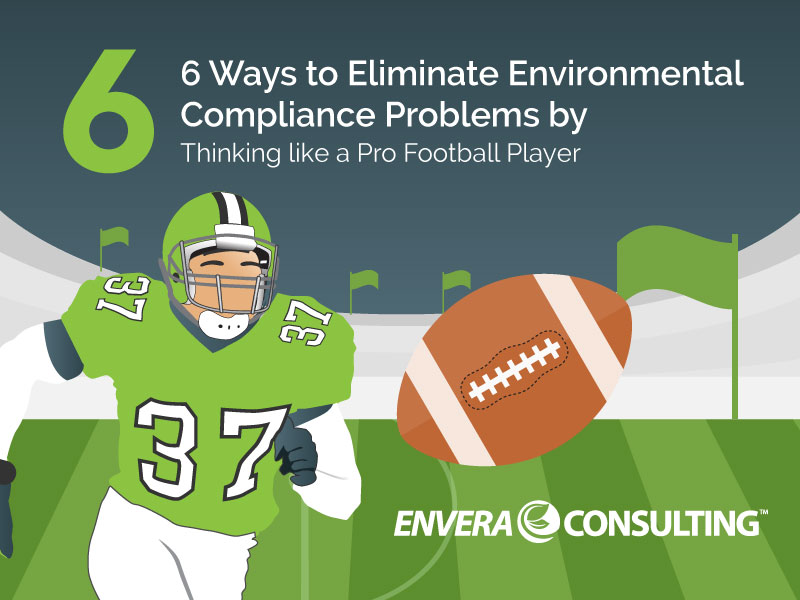

Professional athletes often talk about being at the top of their game. They talk about putting out their best and being the best they can be.
They admit they made mistakes that led them to lose, and then they “fix” their problems so that they won’t make the same errors the following week.
Athletes seldom, if ever, say their playing is perfect and there’s nothing to improve. Typically, they tell people that they’re always assessing their performance specifically so they can improve.
But do people talk about their air-quality compliance program in the same way?
Using the Off-Season to Improve
For most, the last quarter of the year is a slow period in our industry. It’s our “off-season.”
With the majority of the reports complete, it’s easy to fall into “maintenance mode” and take it easy, look forward to the upcoming holidays, and enjoy the calm before the storm. Because once the calendar flips, it’s going to be another wild ride.
But is that any way to improve? Do you hear of elite athletes taking it easy during the off-season?
Almost all professional athletes continuously train year-round and try to improve their game in some way, be it mentally, physically, or emotionally. For these individuals so driven to succeed, working to improve never stops.
You, too, can be like a professional athlete with regards to your environmental compliance program.
Here’s how.
The End-of-Year Environmental Compliance Review
An end-of-year compliance review allows you to reflect on what was encountered during the past reporting season and look for ways to improve.
If you’re like most people in the industry, the first eight or nine months of each year are a whirlwind of activity. You prepare annual emission reports, deal with inspections, pay fees, and keep your facility in compliance on a daily basis.
This early part of the year is intense, and it doesn’t provide much time for solving problems. Many folks try to figure out what’s wrong with the data rather than trying to figure out how to eliminate the problem that caused the data to be wrong in the first place.
If there’s one thing we’ve observed from watching professional athletes, it’s that they’re almost always evaluating their performance, usually by watching replays to see where and why things didn’t work out.
And they do this studying extremely well. Here are three examples that you can look at to illustrate this point: one, two and three.
In order to prevent compliance problems and lower your risk for a violation, an end-of-year compliance report is probably the best step you can take, and one that mimics how a professional athlete treats his/her career.
6 Areas to Focus on During the End-of-Year Environmental Compliance Review
1. Review the year’s facility data with an eye out for anomalies. Obtain all of the records needed to explain these anomalies if needed. Work to address these anomalies.
2. Compare your facility records to the limits on your permit. Investigate instances where deviations have occurred, and look for gaps in your program. Work to close those gaps.
3. Verify that all monitoring is being completed per the requirements of your permit. If the monitoring is being done, be sure that the measurement devices are calibrated and recording data properly.
4. Verify that all facility equipment has an air permit or is on a facility permit. This is especially important if you have a large facility with a multi-large permit and numerous pieces of equipment. If you find unpermitted equipment, prepare the air permit applications needed to get those devices permitted.
5. Gain closure on reported deviations, and consider if they’ve been reported in the past and how they can be prevented from happening again. Work to eliminate any repeat deviations.
6. Gain closure on any notices of violations (NOV) that are received, and again consider the history of the violation: Has the violation been issued in the past, or is it new? Work to eliminate any repeat violations.
Too Busy? Start Small.
Are you stuck in the busy trap? Stanford psychologist BJ Fogg advises people who want to start flossing to start with just one tooth.
You can apply the same thinking to your environmental compliance program.
For example, while it’s preferential to review all of your compliance data on a regular basis, it may not be possible with your current resources. Just pick one parameter. Not only is it less daunting, but it also allows you to take a small step toward getting rid of problems.
By completing an end-of-year compliance review, you’re taking a proactive approach to excellence in your program. And by looking at what happened over the past year, you can make corrections during the off-season so that:
- The company has less risk environmental risk.
- You can impress your boss when repeat violations become a thing of the past.
- It’ll be less work for you to find the root causes of each problem during the “boom” of the reporting season next year.